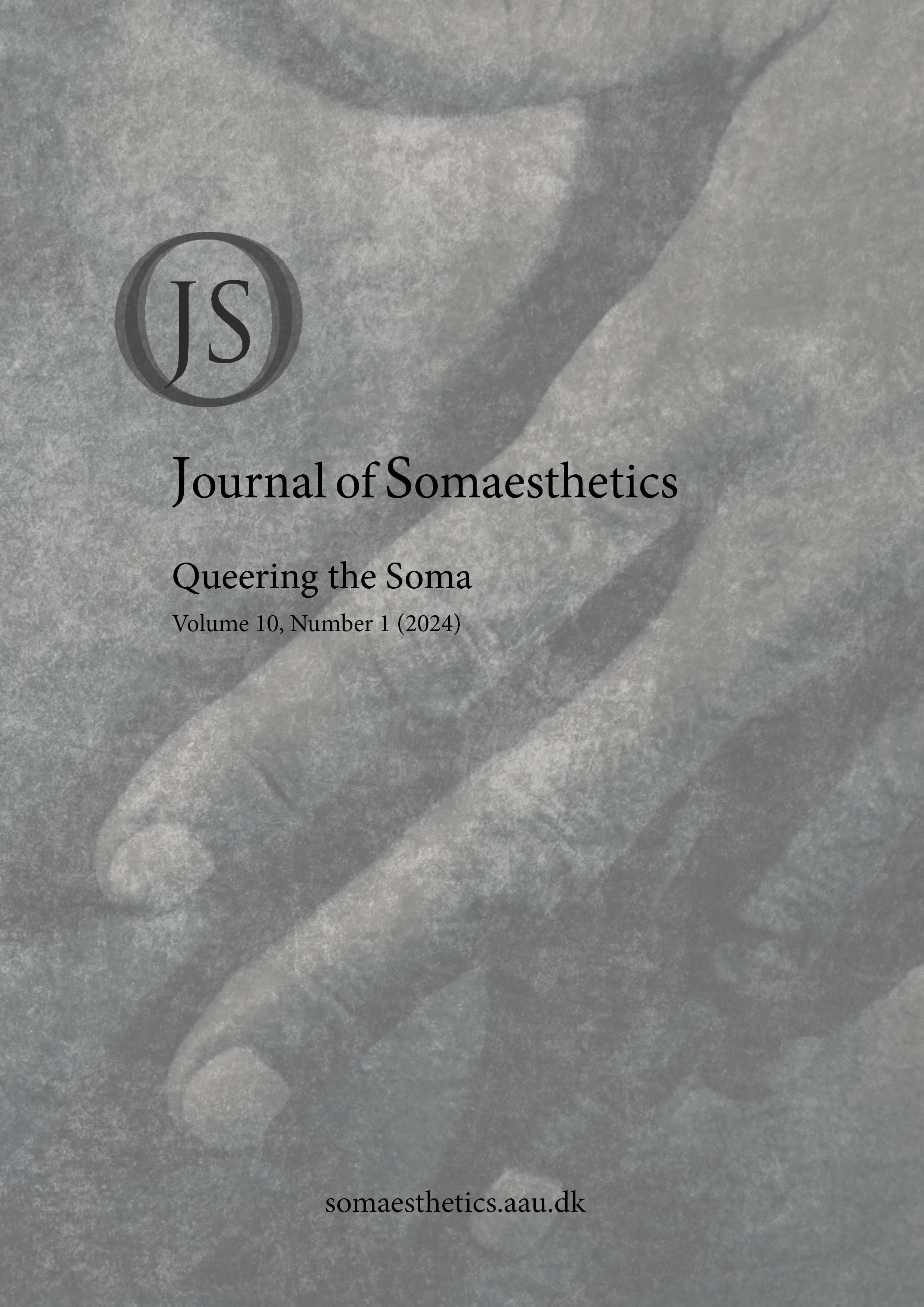Vol. 10 No. 1 (2024): Queering the Soma

According to Richard Shusterman, “the body is both shaped by power and employed as an instrument to maintain it—how bodily norms of health, skill, and beauty, and even our categories of sex and gender, are constructed to reflect and sustain social forces” (Shusterman 2020, 247). In this issue, authors consider somatic identities and behaviors that subvert somatic normativity, with a special focus on gender and sexuality. Most work in somaesthetics has been devoted to heteronormative identities, behaviors, and histories. There has been little devoted to those that fall outside this narrow category. This issue is dedicated to intersections between queerness and somaesthetics, broadly construed. Each author supplies a unique perspective on queering that pertains to gender, sexuality, and somaesthetics as a philosophical approach to experience. With this issue, we strive to continue expanding somaesthetics as an inclusive, open-ended, and melioristic approach to inquiry.
T.J. Bonnet’s essay, “The Nonbinary Orientation of Somaesthetics” argues for what they call “the incipient queerness of somaesthetics.” For Bonnet, nonbinary captures the anti-foundationalism and anti-dualism of somaesthetics. Drawing on the work of thinkers such as Sara Ahmed, Shannon Sullivan, and Paul B. Preciado, Bonnet argues that somaesthetics is a “natively queer philosophical orientation that not only matures the philosophy that came before it but also positions itself for subversive modes of actions.”
In “Deviance and the Aesthetic Schema: Queer(ed) Somaesthetic Analysis of Poor Things (2023),” Kei Graves provides a queer(ed) somaesthetic analysis of the film’s protagonist, Bella Baxter. Graves’s argument “explores how Bella's body serves as a vehicle for learning through the sensual erotic, a source of social discourse on personhood, morality, and autonomy, and a space where others project hegemonic norms of beauty, gender, and sexuality.” The analysis of Bella’s character as queer(ed) parallels experiences of people who are marginalized and minoritized, especially those who identify and are identified as queer. Through a queer(ed) somaesthetic view of the film, Graves explores both how hegemony is imposed upon bodies marginalized as deviant and how the erotic may be used for self-actualization.
Two authors address drag performance specifically, providing important perspectives that contribute to work in queering somaesthetics. First, Dani Jenck’s essay, “Politicization as Signification: Drag Performance as Hermeneutics,” argues that drag personas and performances inherently challenge dualistic ideas of gender identity and expression. Jenck begins by applying a Ricouerian “framework of narrative onto drag performance by focusing on how the politicization of drag performance acts as narrative text that is layered onto and alongside drag performativity.” From this framework, the author provides an account of their own experience as a drag queen. Jenck describes how the complexity of drag expands the scope and possibilities of Judith Butler’s performativity theory regarding gender “while also further bolstering how their theory interweaves with other theories that concern the marginalization of peoples and bodies.” Second, Megan Volpert’s essay, “Shusterman Goes to Camp: An Ars Erotica of Somaesthetics in Drag Culture,” addresses the lack of work that has been done concerning camping and queering in drag culture. Drawing on Rupaul’s Drag Race as a somatic framework, Volpert uses drag as a way to begin queering ars erotica. She argues, “somaesthetics can and should theorize drag queening by describing how the bodily practices associated with it function to construct a queer culture with attendant aesthetic and moral values that may often run counter to those of the heterosexual majority in-group.” This essay serves as an instrument to pave the way for somaesthetics to become more inclusive and less heteronormative.
“Foraging Amid Perplexity: Queer Pragmatism, Neuropragmatism, and the Erotic Arts” also expands on the notion of ars erotica. In this essay, Tibor Solymosi challenges Shusterman’s proposal to develop a pluralistic ars erotica by using Catherine Malabou’s recent philosophical work on the clitoris. Solymosi applies Malabou’s idea of clitoridian philosophy with queer pragmatism and neuropragmatism as an expansive set of somaesthetic instruments that trouble phallocentric notions of ars erotica and contribute to more inclusive inquiry.
This issue also includes a performance artist’s self-reflection about their work and an interview with a visual artist. Creator and performer, Rowena Gander, who has worked in pole dance for 10 years, critically analyzes her solo show, Barely Visible (2021). She focuses on the empowering and erotic potential of her performance and how expressions of sexuality emerge from her creative actions as a gay woman.
In their interview with the Journal of Somaesthetics, Ian Gerson provides insight into queer themes in their somatic art. They touch on themes that include trans as a verb, the concept of tremble, and the notion of illegibility as a form of protection. Speaking with JoS, Gerson explores how queer theorists and experiences influence their work with found objects, decisions concerning materials, and the creation of wearables.

